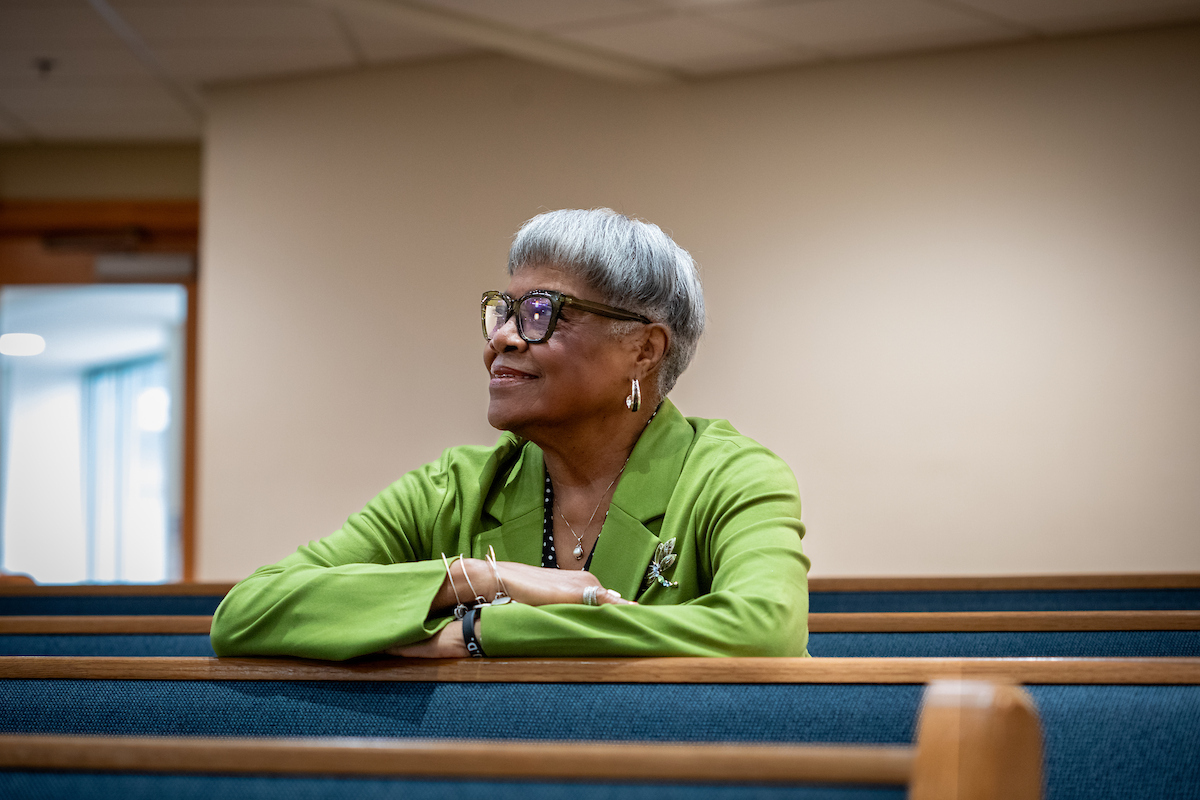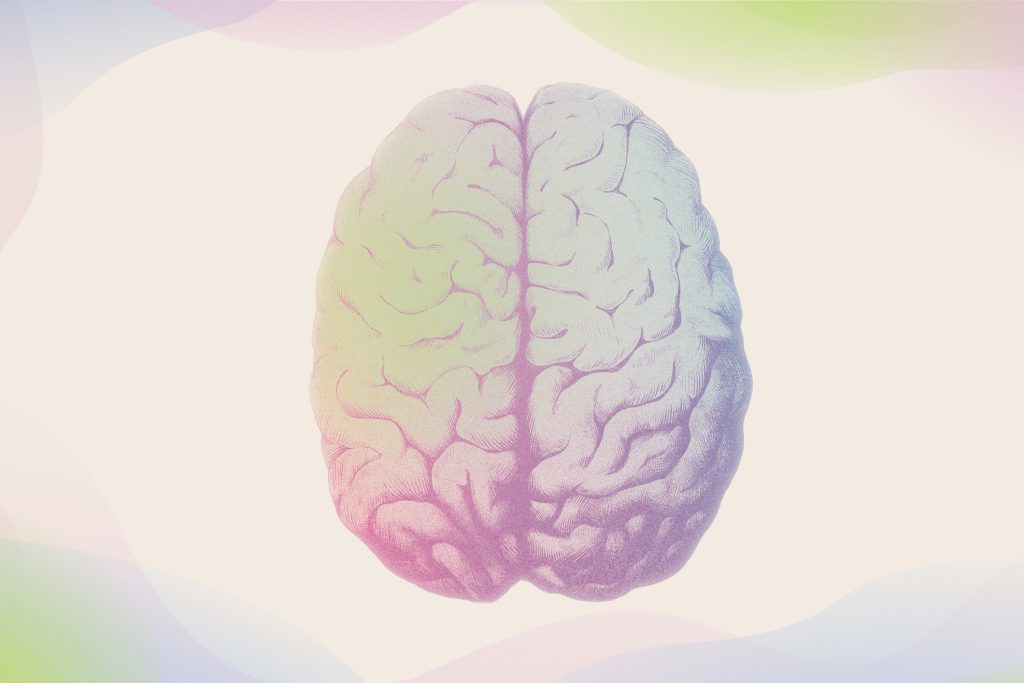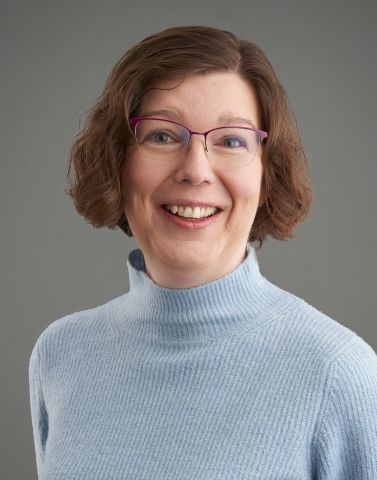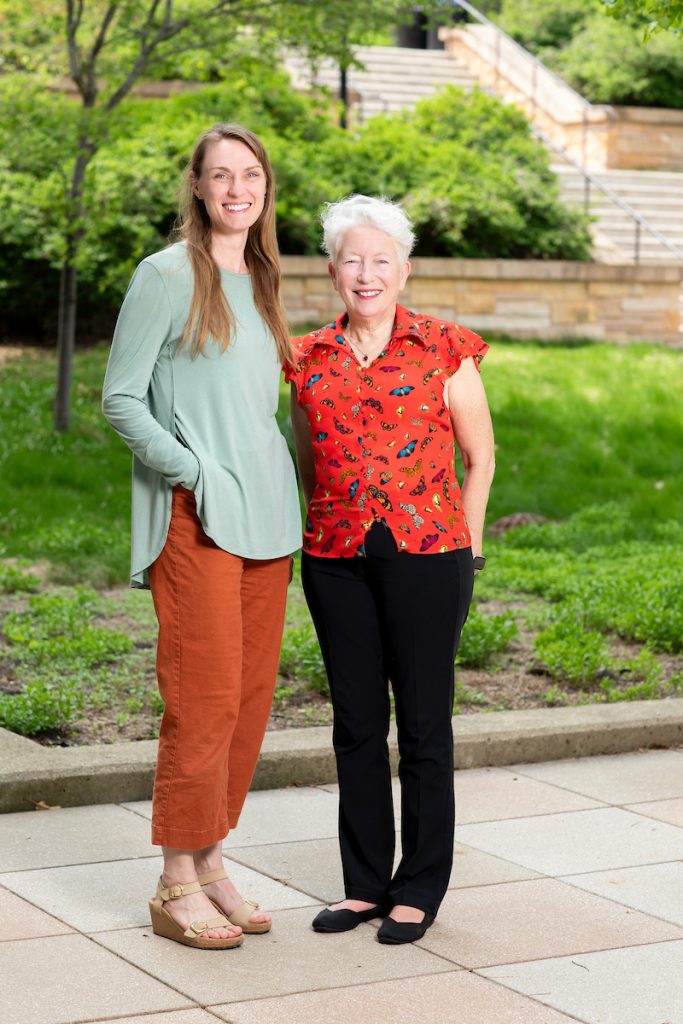By Laurel White
When Chris Hodge had COVID-19, her symptoms were mostly indistinguishable from the asthma she deals with on a regular basis. For her, the aftermath of the illness has been more challenging.
She finds herself to be a little more forgetful. Sometimes, she walks into rooms and her purpose slips away. She pauses to think for a second, and this helps her regain her bearings.
“I definitely have some brain fog,” Hodge says.

A retired principal, Hodge is used to being sharp and pulled together, so the fogginess can be frustrating. When she learned about an opportunity to contribute to a School of Education research project examining brain fog for people previously diagnosed with COVID-19, she decided to join the cause.
“I thought, ‘I really have nothing to lose, I have more to gain by being a participant,’” she says.
The project, a collaboration between scholars in the School of Education and School of Medicine and Public Health, aims to identify the best way to measure brain fog in a clinical setting — something that has so far stymied many health care providers and patients. The findings of the study could inform the development of more targeted therapies to combat the effects of brain fog, which include memory loss, attention deficits, and fatigue, that make it hard to complete the tasks of daily life. living with the deeply challenging — and sometimes isolating — effects of Long COVID and brain fog.
“I think this project is consistent with the vision and values of the School of Education,” says Dorothy Farrar Edwards, the School of Education’s associate dean for research and director of health research. “Just like our educational missions in public schools, I really think our health and health equity projects are important to enacting our values as a community.”

Farrar Edwards leads the ongoing project with Aurora Pop-Vicas, an associate professor of infectious disease in the School of Medicine and Public Health, with key support from doctoral student Kristen Kehl-Floberg. Several other doctoral students and undergraduates in the School of Education’s Department of Kinesiology have also contributed to the effort.
Kehl-Floberg says she hopes the project provides validation and hope for millions of people living with the deeply challenging — and sometimes isolating — effects of Long COVID and brain fog.
“Millions of people are having this experience, and it’s clearly related to COVID-19 infection,” she says. “It’s important to note that if people feel they’re having a change in their day-to-day abilities, they’re not wrong. Just because we don’t have a test to indicate those changes yet doesn’t mean you aren’t experiencing them.”
Getting a better grip on fog
A number of studies have shown what COVID-19 can do to the brain, from reduced blood f low to inflammation, tissue damage, and thinner gray matter. But not every patient experiencing brain fog will show such clear signs of damage. For them, the most concrete signs are the frustrations and limitations they experience in their daily lives — episodes that are hard to quantify in a doctor’s office.
“Most patients who come to see me have already been to many doctors and have had extensive medical evaluations already,” says Pop-Vicas, who specializes in Long COVID care at UW Health University Hospital. “Those patients are frustrated by ‘normal’ results and the experience of doctors finding nothing wrong with them, but not being able to function the way they used to.”

Pop-Vicas knew a missing piece in this clinical puzzle was a test that measured a patient’s ability to function in the real world — the type of testing Farrar Edwards has spent much of her career creating and studying.
Over decades, Farrar Edwards’ research has shed light on the best diagnostic and treatment methods to rehabilitate patients’ functional cognition after they’ve experienced a stroke, traumatic brain injury, or are living with a condition like Alzheimer’s disease.
“Her experience aligned perfectly with our clinical need to better understand brain fog in patients with Long COVID,” Pop-Vicas says.
Connected through the UW–Madison Institute for Clinical and Translational Research (ICTR), which aims to promote cross-disciplinary collaborations across campus, Pop-Vicas and Farrar Edwards — with the help of Kehl-Floberg — developed their proposal. They wanted to see if using performance-based cognitive testing could more accurately quantify the real-world impact of Long COVID-induced brain fog than the tests currently in clinical use.
For example, instead of asking a patient to count backwards by seven (part of the popular Mini-Mental State Examination), the researchers would observe and score participants as they attempted more complex tasks relevant to their daily lives, like creating a weekly schedule that balances competing needs and blocks of availability.
Someone with Long COVID-induced brain fog may have a “normal” MRI of their brain and be able to count backwards by seven, but they may not be able to complete a more in-depth, consuming, and vital task to everyday success. The tests administered by Farrar Edwards and Kehl-Floberg would show tangible, clinical results for those individuals. After a successful pilot study funded by the Department of Medicine, the researchers won additional support through the ICTR Clinical & Community Outcomes Research (CCOR) Pilot program.
Importantly, the new project set a goal: to acknowledge Long COVID’s disproportionate effect on communities of color by enrolling at least 20% of study subjects from Black residents of Milwaukee and Dane County.
Connecting with community
According to Carola Gaines, when it came to recruiting Black community participants for research, Farrar Edwards’ reputation preceded her.
“Because Dr. Dorothy is so well-known in the community, people trust her,” Gaines says. “She is engaged with the community — and not just when she needs something.”
Gaines is a community research associate for UW–Madison’s Community-Academic Aging Research Network, an office on campus that connects researchers with the communities they hope to serve. For years, Gaines has worked with Farrar Edwards to increase minority community participation in her research projects.

For this project’s recruitment efforts, Gaines connected Farrar Edwards and her colleagues with Mt. Zion Baptist Church in Madison. The researchers began by asking if the Mt. Zion community would be interested in an informational presentation about brain fog — no research questions asked. Kehl-Floberg says it was important to the research team to be certain they were providing something of value to community members.
“For people, some of whom have had experiences of being shut out of the university, to be asked by researchers, ‘Is this something you care about?’ and ‘Would this be useful to you?’ was important,” she says.
Chris Hodge, whose participation in the study was facilitated through Mt. Zion, echoes the importance of that respectful, reciprocal relationship between researchers and study participants.
“In the history of our culture, I think researchers have done studies on us, but we never really benefited from it,” Hodge says. “I think there’s some incentive to some low-income families and people like me having this type of experience (with research), which was a wonderful experience. If more people have that experience, you’ll get more people to participate.”
The research team made trips to Mt. Zion to collect data, which included a roughly two-hour test per individual. Five kinesiology doctoral students supported the data collection, as well as four undergraduate students studying health promotion and health equity.
Alea Sullivan, one of the undergraduate students who supported data collection, says her first taste of rigorous academic research was a deeply positive one.
“It was really enjoyable, a great first step into research,” Sullivan says. “It was really cool to go into the community.”
Farrar Edwards says it’s important to share this model of research with her students, from undergraduates like Sullivan to doctoral researchers like Kehl-Floberg.
“Engaging communities allows you to do more generalizable and applicable research, and projects like this help make sure students are prepared to be in the community to do their work,” she explains.
Farrar Edwards lauds Mt. Zion as a “phenomenal” partner.
“This project has been really special to me,” she says.
Ultimately, the researchers far exceeded their enrollment goal. About 35% of participants were Black.
The road ahead
The project completed data collection in December. Now, the number crunching begins.
The team, with support from a biostatistician in the Department of Medicine, is working to establish its first set of findings. Pop-Vicas says she hopes those findings will inform future studies on Long COVID rehabilitation by helping researchers identify and enroll the most severely affected patients. The researchers also hope to shed light on next steps for medical providers and patients grappling with the diagnosis and treatment of brain fog — the effects of which reverberate in communities across the country every day.
According to the World Health Organization, an estimated 15-20% of people infected with COVID-19 experience Long COVID. Some studies have shown up to half of those Long COVID patients exhibit brain fog.
Pop-Vicas says many have lost their jobs, paused their studies, or given up hobbies or activities that gave their lives joy and meaning.
“We’re seeing this at a scale now in the population that we’ve never seen before,” Kehl-Floberg says.
For Pop-Vicas, building better knowledge of the illness while fostering empathy and a forward-thinking approach are vital to community health moving forward.
“Just because the pandemic is over and COVID-19 is now one of the many respiratory viruses circulating in the community year-round, the health effects of the pandemic are not over,” she says. “As a society, we need to do a better job supporting our fellow human beings who now suffer what is essentially a new post-viral chronic disease — and be better prepared to handle whatever next emerging pathogen will hit us in the future.”